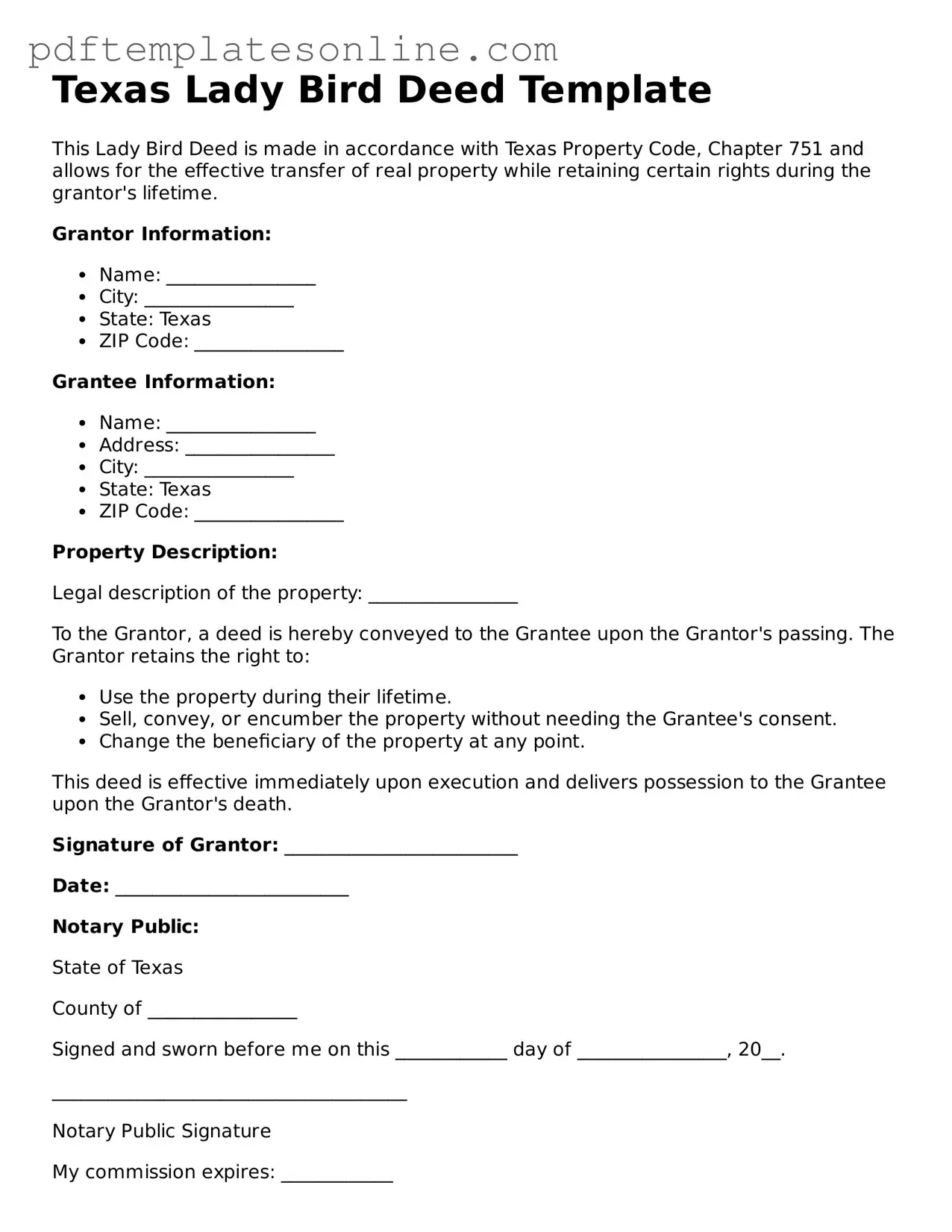Filling out a Texas Lady Bird Deed form can be a straightforward process, but many individuals make common mistakes that can lead to complications. One frequent error is failing to include the full legal names of all parties involved. This can create confusion and may result in legal disputes later on. It is essential to ensure that the names match those on official identification documents.
Another mistake is neglecting to provide accurate property descriptions. A vague or incorrect description can lead to challenges in identifying the property in question. It is crucial to include the complete legal description of the property as recorded in public records.
Some individuals forget to sign the document. A Lady Bird Deed must be signed by the grantor, and without a signature, the deed is not valid. Additionally, witnesses may be required, depending on the circumstances. Omitting this step can invalidate the entire process.
Another common issue arises when individuals do not properly date the form. The date of signing is important for establishing the timeline of the transfer. Without a date, it may be difficult to determine when the deed was executed, which can lead to legal complications.
Many people also fail to have the deed notarized. Notarization serves to verify the identities of the signers and adds an additional layer of authenticity. Without notarization, the deed may not be accepted by title companies or courts.
Additionally, some individuals overlook the importance of recording the deed with the county clerk’s office. Recording provides public notice of the property transfer and protects the rights of the new owner. Failing to record the deed can lead to issues with future property transactions.
Another mistake is not understanding the implications of the Lady Bird Deed itself. This type of deed allows for certain rights to remain with the grantor, and misinterpretation of these rights can lead to confusion or unintended consequences. It is important to fully understand the legal effects before completing the form.
People sometimes neglect to consider tax implications when filling out the deed. Transferring property can have consequences for property taxes, and it is wise to consult a tax professional to understand these effects. Ignoring this aspect may result in unexpected financial burdens.
Another frequent error is not including any specific terms or conditions regarding the transfer. While the Lady Bird Deed is generally straightforward, adding specific instructions can help clarify the grantor's intentions and prevent future disputes.
Finally, individuals may fail to communicate with family members or other stakeholders about the deed. Transparency is key in estate planning. Not discussing the deed can lead to misunderstandings and potential conflicts among heirs. Open dialogue can help ensure that everyone is on the same page.
